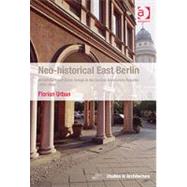Neo-historical East Berlin: Architecture and Urban Design in the German Democratic Republic 1970-1990
, by Urban,Florian- ISBN: 9780754676164 | 0754676161
- Cover: Hardcover
- Copyright: 12/28/2009
The widespread fascination with historic urban environments, which inspired the Venice Charter forty years ago, has since led to a range of practical and aesthetics policies that have a profound impact on a city-dweller's daily life.With its unique geopolitical location and heightened sense of history, East Berlin is an ideal example of this. In the years prior to the fall of the Berlin Wall, the leaders of the German Democratic Republic planned to construct a city center that was simultaneously modern and historical, consisting of both redesign of old buildings and new architectural developments.There was no "socialist design" as such: during the 1970s and 1980s, urban design there took up and developed international currents in close relation with the neighboring countries, both capitalist and socialist. As such, it anticipated many features that played out in the reunified Berlin: the re-discovery of the inner city as a place of residence for the privileged, the use of neo-historical architecture to provide the experience of historicity, the commodification of old city for both residents and tourists, and the visible distinction of social differences in the shape of the city.East Berlin exemplifies how the historic city as a cultural phenomenon transcended the ideological mandates of the respective political systems and reflected the international social and economical change at the time.Drawing from recently released archival sources and interviews with former key government officials, decision-makers and architects, this book sheds light not only on this unique programme in postmodern design, but also on the debates which were taking place with the Socialist government.







